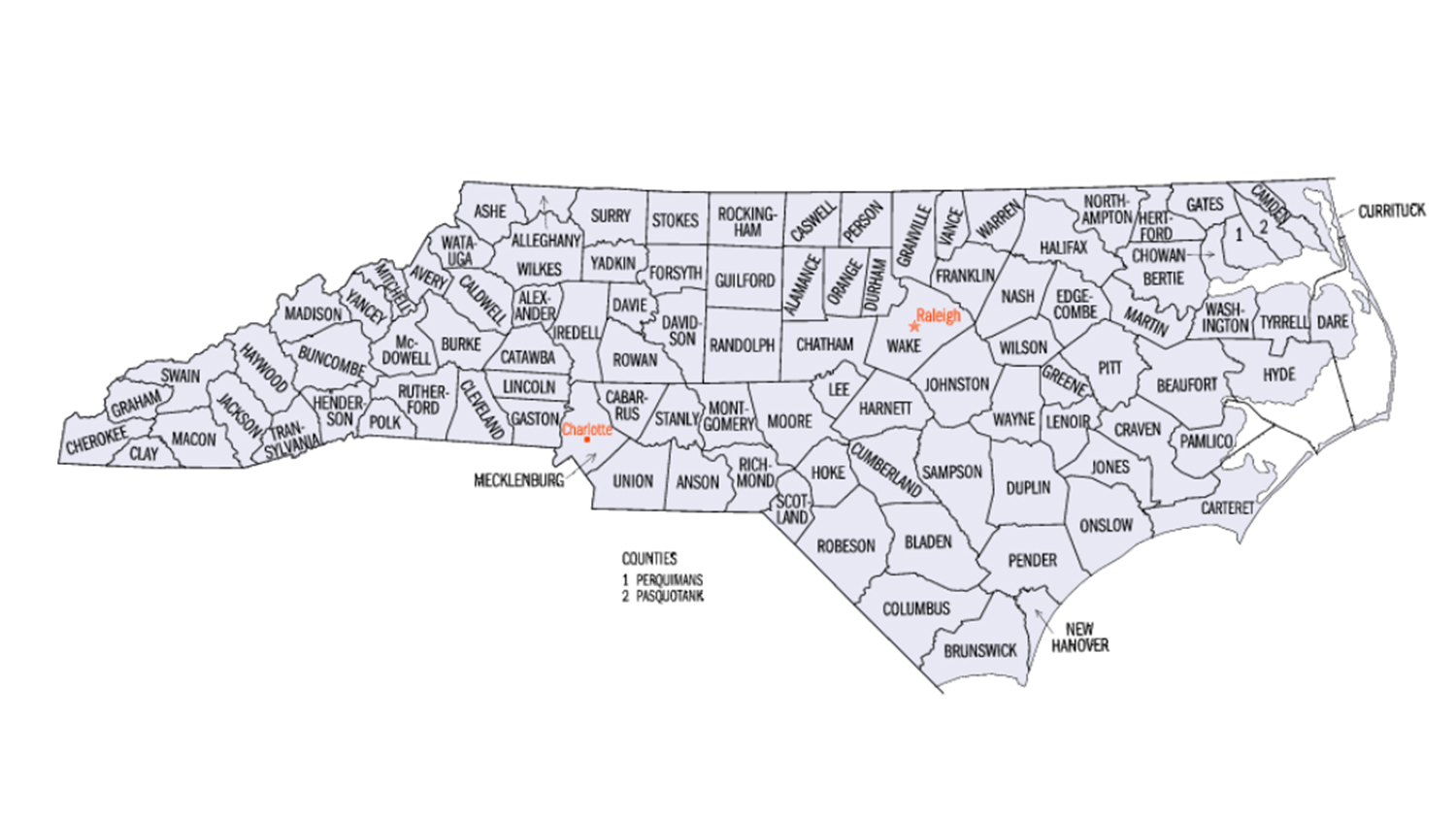Editor’s Note: This is a guest post by Andy Taylor, a professor of political science at NC State. This post is part of our NC Knowledge List series, which taps into NC State’s expertise on all things North Carolina.
North Carolina has 100 counties and in our purple state every one of them can be crucial to the outcome of a statewide election. Remember, Roy Cooper won the governorship in 2016 by just 10,000 of the 4.7 million votes cast. But five counties seem particularly important and interesting these days. Here they are in no particular order…
Cumberland
Cumberland, the home of Fayetteville, has become a battleground county in our purple state. This doesn’t mean it has swing voters. It has a slightly smaller proportion of unaffiliated voters than the state as a whole, but many fewer than the handful of other large urban counties. This is a consequence of its large African-American population and huge military population. At 41 percent, no other large county, not even Durham, comes close in the proportion of registered voters who are black. And, as home to Fort Bragg, the biggest military base in the world, more than one-in-five residents of Cumberland are veterans – and these days veterans are going for Republicans by over 20 points. The county must go at least 55 percent for Democrats to win statewide. Unfortunately for the party, overall voter turnout in Cumberland was about eight percentage points lower than the state’s in 2016.
New Hanover
New Hanover, where Wilmington sits, isn’t quite the size of Cumberland. It’s in that second tier of counties by size, one that also includes Buncombe, Cabarrus, and Gaston. But of the top ten counties it is currently the one that most resembles a microcosm of North Carolina. Donald Trump won there in 2016 by the same amount he did statewide, and while he and GOP Senator Richard Burr were securing the support of a majority of New Hanoverian voters, so was soon-to-be-elected Democratic governor Roy Cooper. The county also picked every 2016 Council of State winner except the auditor’s race. It is more female, older, and much whiter than the state as a whole, giving it a more culturally liberal feel. And it is growing like a weed. Its population has increased by more than one-eighth since 2010.
Union
A number of exurban counties around Charlotte and the Triangle are candidates, but I think Union, on the South Carolina border just southeast of Mecklenburg deserves special mention. It is large and rapidly growing but, unlike many other counties around the state’s major cities, maintains its Republican demeanor. It has the second highest median household income of any county and contains Monroe, the home of former Sen. Jesse Helms. No GOP statewide candidate received less than 63 percent of the vote in 2016, a performance that, if anything, marked a slight improvement on 2008. Turnout is, not surprisingly, consistently high. If Republican candidates are to win presidential, gubernatorial, and U.S. Senate races in North Carolina, they need to run up the score in Union. There are not many vote-rich counties we can say that of these days.
Henderson
The extraordinary economic, demographic, and political changes occurring in the mountains propel Henderson County onto the list. Whereas larger Buncombe County has become a Democratic powerhouse, adjacent Henderson is considerably more Republican. It has emerged as an important counterweight to Asheville in the region’s competitive party politics. Unlike down east, however, mountain conservatives are more libertarian in outlook. Henderson is one of only three counties where a plurality of voters are unaffiliated. Nearly half of its residents do not associate with any recognizable organized church. It has been crucial to the electoral success of GOP Rep. Mark Meadows and has shaped the congressman as he has risen to prominence in Washington and the House Freedom Caucus. It will undoubtedly play an important role in the future of the state GOP as social and economic conservatives tussle for control.
Mecklenburg
Mecklenburg is the largest county in the state with more than one million residents, and is home to our largest city, Charlotte. By making it the final entry, moreover, you will have noticed I have omitted Wake, second only to Mecklenburg in population by about 30,000. Why? Mainly because Mecklenburg’s African-American population is much larger. Democrats really need to extend their margins of victory here if they are to win statewide. Turnout is therefore crucial. Overall voter turnout in Mecklenburg County is consistently about eight percentage points lower than Wake’s, and that was the case even when Barack Obama was on the ballot. Getting Mecklenburg’s turnout up to Wake’s levels is probably worth nearly 50,000 votes to Democrats. As we have seen over the past several cycles, that can make the difference in our purple state – in 2016 it might well have given them two additional council of state seats.
- Categories:



